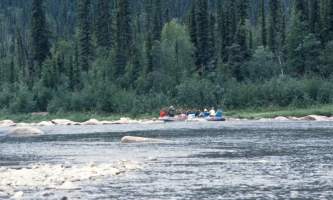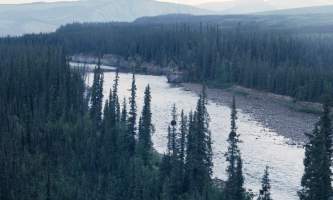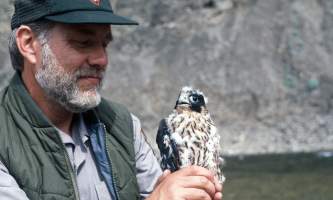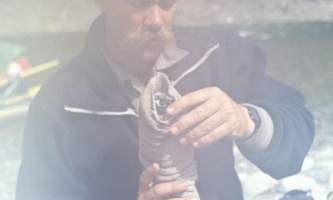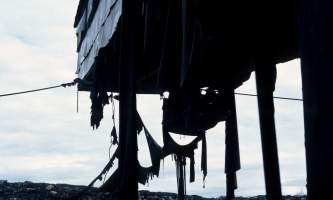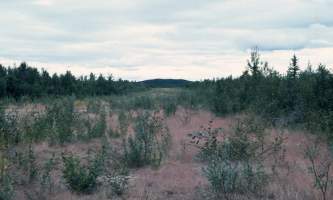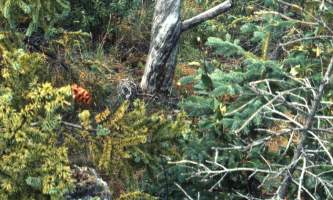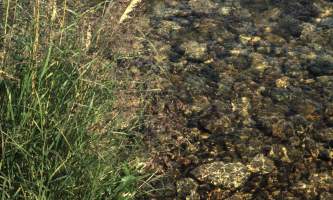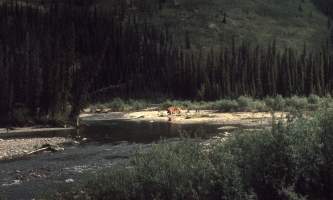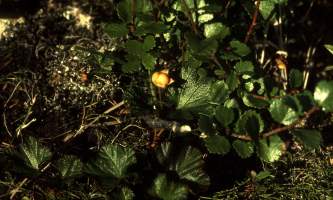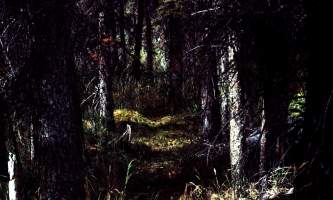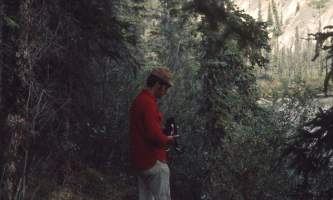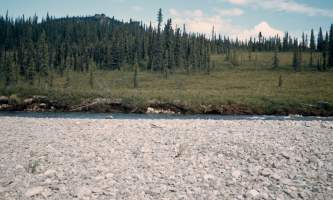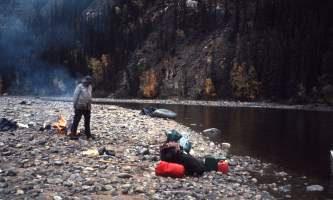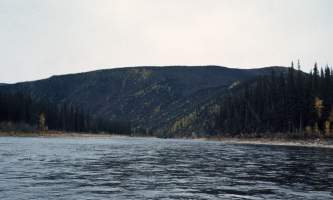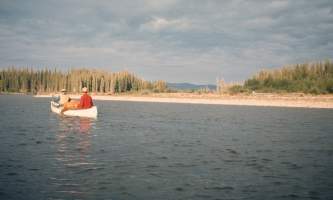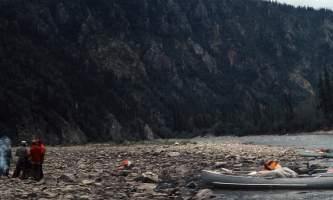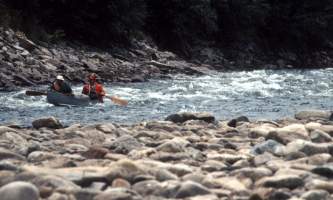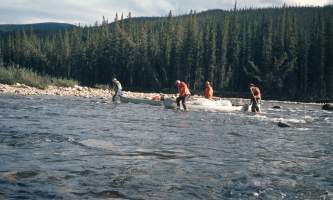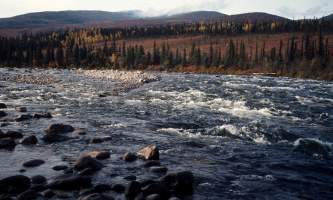Why Float This River
From the Tanana uplands and The Mertie Mountains above 64 degrees north latitude, the Charley River is a National Wild and Scenic waterway and flows northward about 108 miles to the Yukon River. It is often thought of as one of the premier wilderness whitewater trips of the state and flows through three distinct topographic regions – open upland valley, cliff bound river, and open floodplain – offering varied, and spectacular scenery as well as unspoiled wilderness. The upland valleys drain a rugged mountain area where peaks over 6,000 feet are common. The river passes beneath high bluffs and cliffs where the majority of the rapids occur. When the river leaves the high bluff area, it enters the flat plain of the Yukon Valley where it slowly meanders to the Yukon River. It is a river of exceptional clarity with good hiking opportunities in its upper reaches, and good whitewater in its middle cliff-bound section. The fishing is considered good and there is archeological evidence of early occupants that date back more than 24,000 years as well as more modern relics from the more recent gold mining days.
Most of the Charley is rated as Class II (intermediate) water on the international scale of river difficulty, with limited areas rated as Class III (more difficult). During periods of high water on the upper sections of the Charley, boaters can encounter Class IV rapids. Most trips are approximately 88 miles and require 6 to 10 days to complete.
Put In
There are primitive, unmaintained gravel airstrips at locations referred to as Gelvin’s, Three Fingers, or Joseph. The most popular airstrip is Gelvin’s, located in the upper portion of the Charley just above Copper Creek and this is where the 88 mile section begins. This trip takes up to 6 days to complete. A helicopter is needed to access the headwaters and requires a permit. The strip at Joseph has a strip long enough for a 206, and from here it would be a short shuttle flight to the headwaters of the Charley, or you could hike over a low pass to the Charley River.
Take Out
The take out can be one of two options. The first is a chartered pickup by floatplane or motorboat at the junction of the Charley and the Yukon River. The other option is to continue an additional 63 miles to the town of Circle, on the left shore of the Yukon, where the Steese Highway is found. The Steese is a direct link back to Fairbanks. This extra 60 miles should take 3 to 4 days to complete.
The Trip
Gelvin’s Strip to Crescent Creek: 12 miles
This is the whitewater section with exposed rocks and sweepers and a swift strong current propelling your raft along—sometimes at up to 8 miles an hour. From the airstrip the river flows first northeast for a mile quickly changing to north then northwest as it heads toward the steep mountainside that marks some of the first wastewater full of pourer rocks to maneuver around and past. A small canyon with steep cliffs is soon entered and all the way to the mouth of Copper Creek the river pulses with fun rapids. Below Copper Creek, the river opens up for 4 or 5 miles to just above Hosford Creek where another small canyon runs for 2 miles to Crescent Creek, entering from river left.
Crescent Creek to the Yukon River: 76 miles
Here, the river begins a general northeast and east direction, while meandering along all points of the compass. Along the way you will see numerous old cabins and relics from the mining days. The forest and shrub is dense along here but the stream mouth camping is good and the fishing great. Essie Creek, Highland Creek, Hanna Creek, Dewey Creek, and Todd Creek pass by recalling names of prospectors of old. Just above Todd Creek along the right side of the river is a spectacularly steep mountainside rising 500 feet above the river. Below Everett Creek the river widens and opens into the lower plains of the Yukon valley. Soon on river right enters Bonanza Creek the last main tributary before reaching the Yukon.
Yukon River to Circle: 63 miles
This stretch of the Yukon is a classic bit of wide, huge river with islands and channels. About ten miles along, the river flows due west past a series of cabins known as Slaven's McGregor and Woodchopper which are on the trail of the 1000 mile Yukon Quest Sled Dog Race trail. There are fish wheels and likely motorboats along this stretch. After another 15 miles the big river swings to the north and pushes up against the left shore at Takoma Bluffs. A brief swing to the west is followed by a mostly northward flow as the last 40-mile flow pass. Be sure and stay to the left as you get nearer to Circle, as there is a channel that goes to the right and rejoins the river below Circle.
More Advice
- Maximum stream flow occurs in late May and early June and by September there may not be enough water left to float an inflatable raft and would require extensive lining of inflatable kayaks.
- Fish species found here are numerous with Arctic Grayling, Northern Pike, Sheefish and three species of Salmon: King, Coho and Chum.
- Water levels can rise dramatically and rapidly after heavy rains.
- Although permits are not required for floating the Charley River, it is strongly recommended that visitors file a voluntary float plan and a notification of trip completion.
- To file a float plan, contact the Eagle field office or visitor center (907) 547-2233.
Charley River GPS Coordinates
Gelvin's Airstrip
A helicopter is needed to get to the river's headwaters. This is the whitewater section with exposed rocks and sweepers and a swift strong current propelling your raft along—sometimes at up to 8 miles an hour. Put in option for Charley River.
65.43543500, -142.86071800
Town of Circle
The take out is found on the left shore of the Yukon, where the Steese Highway is. The Steese is a direct link back to Fairbanks. Take out option for Charley River.
65.82556300, -144.05971500
Charley-Yukon Junction
Take out here by a chartered pickup by floatplane or motorboat. Take out option for Charley River.
65.43543500, -142.86071800
USGS Maps
Eagle C-5, C-6, D-5, D-6
Charley River A-4, A-5, B-4, B-5, B-6, C-6, D-4
Circle C-1
Distance
88 miles
Days
6-10
Difficulty
Easy/Moderate
Class
II, III
Craft
Kayak
Raft
Cost
$$$


